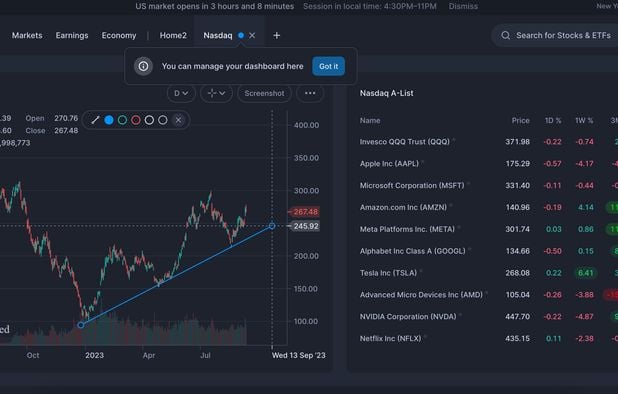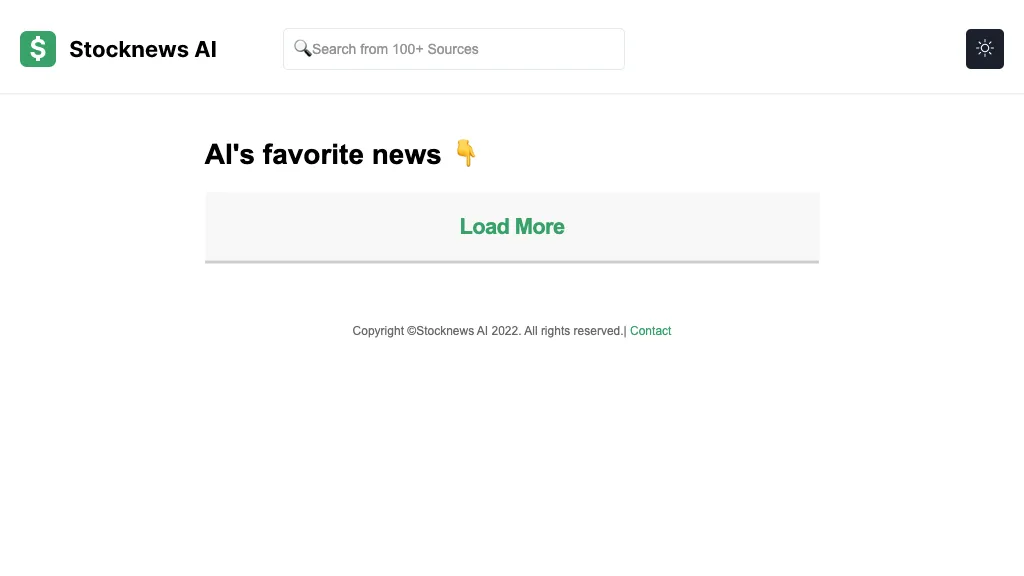When selecting a trading platform that utilizes AI to forecast or analyze stocks and market trends, customer service is a major consideration. A responsive and reliable support team can make a big difference when it comes to solving issues, maximizing the use of the platform, or providing a smooth trade experience. These are the top 10 tips for evaluating the customer service provided by these platforms.
1. Evaluation of the support available
24/7 support: Make sure that your platform provides support round-the 24/7, which is crucial for real-time trading and global markets.
Hours of business If there's no 24/7 support available You should make sure that support is available during your business hours.
Find holiday coverage.
2. Test Response Times
Initial response. Send an initial test question to support to determine how quickly they'll be able to respond.
Time to fix It is not enough to simply acknowledge the issue and then decide the time it will take to resolve it.
Live chats: If it is available Check the response time and effectiveness.
3. Examine the Support Channels
Multi-channel support: Make sure the platform supports you via different channels (e.g. email telephone call, email live chat, email, and social media).
Find the channel you prefer to see if it is accessible and reliable.
Self-service options are available Find a comprehensive FAQ, a forum for community members, or a comprehensive knowledgebase to solve your problems fast.
4. Examine the Quality of Support
Experience: Ensure that the support staff have a complete knowledge of the platform trading, technical and other issues.
Check if the agent is competent to resolve complex issues or escalate issues as needed.
Professionalism - Examine the support interactions are friendly, helpful and professional.
5. Make sure you are in touch with the Account Manager
Premium support: Check whether you have dedicated account managers to higher-level users or institutions.
Verify if the account manager offers individualized support and proactive guidance.
Relationship building: Find out if account managers are accessible and build long-term connections with users.
Review the Support Documentation
Knowledge base: Ensure that the platform has the ability to search and organize a knowledge base with tutorials, guides, and troubleshooting advice.
Video tutorials: Find out if there are any video tutorials that you can download.
API documentation. If you're an expert in programming, make sure the platform has a detailed and concise API documentation.
7. Review peer and community support
Forums for users - Look for if the platform offers a forum or community where users can discuss tips and share solutions.
Social media groups: Search for groups on social networks that are not official (e.g. Reddit. Facebook. LinkedIn), where users discuss the platform.
Community engagement: Ensure that the platform team is active in the forums and discussions of the community.
8. Evaluate Escalation Processes
Issue escalate. You should have a clear process for escalating unresolved issues up the support chain or to management.
Follow-up Check to see if Support follows up to confirm that the issue is resolved.
Feedback loops: Verify the ability of the platform to collect user feedback to improve support services.
9. Test Support during Critical Conditions
Contact Customer Support in times of high volatility to find out how they react.
Technical Problems: Try simulated the issue (e.g. login issues, data discrepancy), to see how support personnel handle it.
Trade execution - Make sure that support is in place to help with urgent trade-related issues (e.g. orders that are not executed, delays with execution).
Review User Feedback to find Support
Reviews on the internet: Make use of platforms such as copyright G2 or Reddit for user reviews to assess overall satisfaction.
Testimonials and Case Studies Find reports or testimonials that show positive customer experiences.
Go to the platform and see how they handle complaints, negative feedback and customer support.
Bonus Tips
Support during trial time Test the support of the platform by using the demo or free trial period.
Support for your language If English is not your first language, you should check whether it's supported.
Training and onboarding: Check if the platform offers onboarding classes or other training to assist new users in getting up and running.
These tips will assist you in evaluating the quality of customer service provided by AI trading platforms which predict or analyze price fluctuations in stocks. You will then be able to choose a trading platform providing reliable, prompt, and helpful support. A customer support system that is quick and efficient can enhance your overall experience. Follow the top rated more help about ai trade for site recommendations including ai for stock predictions, ai investing platform, best ai trading app, ai investing platform, ai stock trading bot free, using ai to trade stocks, ai for trading, ai for stock trading, ai for stock trading, ai trading tools and more.

Top 10 Tips For Assessing The Risk Management Of Ai Stock Predicting/Analyzing Trading Platforms
Any AI stock-predicting/analyzing trading platforms must include risk management that is crucial to protecting your capital and limiting losses. A platform with robust risk management tools will aid you navigate the market volatility and make well-informed decisions. Here are 10 suggestions on how to assess the platform's risk management capabilities.
1. Examine Stop-Loss features and Take Profit Features
Customizable levels - Make sure that the platform allows you adjust your stop-loss, take profit and profit level for each trade or strategy.
Make sure you are able to use trailing stops. They will automatically adjust if the market shifts in your favor.
Make sure your platform allows you to put stop-loss order that guarantee the closing of the trade at the price specified, even on volatile markets.
2. Assessment Position Sizing Instruments
Fixed amount: Make sure that the platform permits you to define position sizes based on an amount that is fixed in monetary terms.
Percentage of Portfolio Determine whether it is possible to define the size of your position as a percent of the total portfolio to control risk in a proportional way.
Risk-reward percentage: Examine to see if it is possible to define the risk-reward percentages for specific strategies or trades.
3. Look for Diversification support
Multi-assets trading: Verify that the platform is able to support trading across multiple asset categories (e.g. ETFs, stocks options, forex, etc.) to diversify your portfolio.
Sector allocation: Determine whether the platform has tools to monitor and manage exposure to sectors.
Geographic diversification - Verify that the platform allows the ability to trade on markets across the world. This will allow you to reduce geographical risks.
4. Review the margin and leverage controls
Margin requirement: Verify that the platform is clear about any margin requirements applicable to leveraged trades.
Find out the limits on leverage. You can utilize this option to manage the risk you take.
Margin Calls: Ensure that the platform is sending timely notifications of margin calls to stop the liquidation of your account.
5. Review the risk Analytics and Reporting
Risk metrics: Make sure the platform offers key risk indicators (e.g. Value at Risk (VaR) Sharpe ratio, drawdown) to your portfolio.
Analysis of scenarios: See if the platform allows users to create various market scenarios in order to evaluate the potential risk.
Performance reports: Check whether the platform provides detailed performance reports that include risk-adjusted returns.
6. Check for Real-Time Risk Monitoring
Portfolio monitoring: Ensure the platform allows real-time monitoring of your portfolio risk exposure.
Notifications and alerts. Verify whether the platform offers real-time notification of events involving risk.
Risk dashboards: Find out whether the platform provides risk dashboards that can be customized to give you an in-depth view of your risk profile.
7. How do you evaluate Stress Testing & Backtesting
Stress testing. Make sure your platform allows for you to stress test your portfolio or strategy under extreme market conditions.
Backtesting. Check whether the platform permits backtesting, which is the use of data from the past to evaluate the level of risk and performance.
Monte Carlo simulations: Verify that the platform is using Monte Carlo simulations to model the possibility of outcomes and assess the risk.
8. Evaluation of Compliance Risk Management Regulations
Compliance with regulatory requirements: Ensure that the platform is compliant with the relevant risk management regulations in Europe as well as the U.S. (e.g. MiFID II).
Best execution: Verify if the platform is in line with the best execution practices, making sure that transactions are executed at the most competitive prices to avoid slippage.
Transparency: Find out whether the platform has clear and transparent risk disclosures.
9. Verify for User Controlled Risk Parameters
Custom risk rules: Ensure the platform permits you to define custom risk management rules (e.g., the maximum daily loss, or maximum size of the position).
Automated risk control: Ensure that the platform implements risk management rules automatically based upon your predefined guidelines.
Manual overrides - Examine to see if your platform permits you to manually override automated risk controls.
User feedback from reviewers and case studies
User feedback: Read user reviews to determine the platform's capacity to manage the risks.
Case studies: Check for testimonials or case studies that highlight the platform's capabilities in risk management.
Community forums: Check whether a platform is home to a community of users who want to share strategies and tips for managing risk.
Bonus Tips
Trial period: You can avail a demo or a free trial to experience the risk management features of the platform.
Support for customers: Ensure whether the platform offers solid support for issues or questions relating to the management of risk.
Educational resources: Check if the platform provides educational resources or tutorials on risk management best practices.
By following these tips, you can effectively assess the potential risk managing capabilities of AI trading platforms that predict or analyze stocks, ensuring you choose one that will to protect your capital and limit the possibility of losses. Tools for managing risk that are robust are vital for trading in unstable markets. Follow the most popular ai investment tools tips for site info including ai stock prediction, trading ai tool, ai in stock market, ai stock investing, ai stock prediction, stocks ai, best ai trading platform, best ai stocks, stock predictor, invest ai and more.
